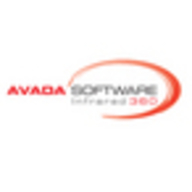

Splunk AppDynamics and Avada Software Infrared360 are competitors in IT performance monitoring. Splunk AppDynamics is favored for its adaptable pricing and strong support, while Avada Software Infrared360 is notable for its feature richness that customers find valuable.
Features: Splunk AppDynamics offers advanced analytics, integrated visibility, and comprehensive application and infrastructure monitoring. Avada Software Infrared360 stands out for secure and scalable monitoring, seamless integration, and robust security features.
Room for Improvement: Splunk AppDynamics could improve its complex setup process, cost management, and scalability for larger environments. Avada Software Infrared360 should enhance user interface intuitiveness, expand integration options, and improve analytics depth.
Ease of Deployment and Customer Service: Avada Software Infrared360 delivers a straightforward deployment process paired with reliable customer support. In contrast, Splunk AppDynamics requires a more complex setup but compensates with extensive support channels.
Pricing and ROI: Splunk AppDynamics generally has a higher initial cost but offers significant long-term ROI. Avada Software Infrared360 provides a cost-effective entry point with stable returns, highlighting its valuable feature set.
| Product | Market Share (%) |
|---|---|
| Splunk AppDynamics | 4.1% |
| Avada Software Infrared360 | 0.3% |
| Other | 95.6% |

| Company Size | Count |
|---|---|
| Small Business | 4 |
| Midsize Enterprise | 5 |
| Large Enterprise | 5 |
| Company Size | Count |
|---|---|
| Small Business | 55 |
| Midsize Enterprise | 36 |
| Large Enterprise | 188 |
Avada Software specializes in Enterprise Middleware solutions. Founded by some pioneers in SOA, MQ and J2EE technology, Avada’s Flagship product, Infrared360, is a holistic & innovative private cloud enabled portal providing self-service administration, monitoring, load testing, auditing & statistical reporting for Enterprise Middleware including IBM’s middleware stack of MQ, IIB (message broker), WAS, and Datapower, as well as other applications servers such as JBoss, TC Server, Weblogic, and other messaging technologies such as Tibco EMS and Kafka*.
Accessed via any web browser on any device, Infrared360 is a single web application, yet scales to 2500+ endpoints without deploying anything (no agents, no scripts) to those endpoints.
Using trusted ‘spaces’ and delegated visibility and control, the portal uniquely provides different business units or even different application users virtual ‘spaces’ in which to work. Within those spaces are only the objects and resources the user has been granted visibility. Role policy dictates permissions on those resources.
It is the ONLY Enterprise Messaging Solution with a built in SOA engine that lets you leverage internal and external services for managing and correcting problems within your middleware messaging environment.
*Kafka coming soon
Splunk AppDynamics enhances application performance monitoring with advanced diagnostics and real-time insights, offering seamless end-to-end transaction tracking and infrastructure visibility.
AppDynamics provides critical tools for businesses to analyze application behavior and performance. Through innovative features like transaction snapshot analysis and adaptable dashboards, users can quickly identify and address issues, ensuring high levels of system uptime and efficiency. It is designed to support complex environments including Kubernetes and AWS, enhancing user experience by detecting performance issues early. Despite needing improvements in network monitoring and integration, it remains a robust option for tracking application health.
What are the key features of AppDynamics?In industries like financial services and e-commerce, AppDynamics facilitates performance tracking across distributed systems, optimizing infrastructure to meet consumer demands. It excels in environments needing precise transaction monitoring and is pivotal in delivering high value and satisfaction.
We monitor all Application Performance Monitoring (APM) and Observability reviews to prevent fraudulent reviews and keep review quality high. We do not post reviews by company employees or direct competitors. We validate each review for authenticity via cross-reference with LinkedIn, and personal follow-up with the reviewer when necessary.